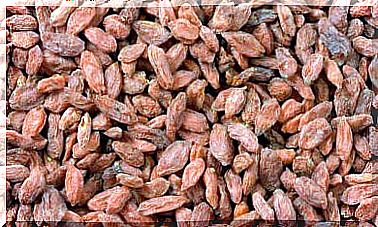Types Of Hormone Therapy For Breast Cancer
Hormone therapy is able to stop the growth of hormone-sensitive tumor cells, regulating the production of these substances by the body.
The hormones
Hormones are chemicals secreted by certain cell types, which cause different responses in the target cells on which they act. Hormones act in the body as “chemical messengers”, allowing communication between different cells.
They are normally secreted into the bloodstream and in this way can travel throughout the body and reach different tissues and cells. When hormones reach their target cells, which are those that have specific receptors for them, they activate certain genes and modify the behavior of the cell in question.
These receptors are actually proteins on the cell surface that specifically bind different chemicals, including hormones. In the case of tumor cells, if they are sensitive to hormones, they will also have receptors for them and will depend on these hormones to divide.
Hormone therapy
About 75% of breast cancer is hormone-sensitive, this implies that cancer cells require hormonal stimuli to proliferate. For this reason, the goal of hormone therapy is to block the body’s production of hormones, slowing down or even stopping the division of cancer cells and the growth of the tumor.
To determine if a cancer is sensitive to hormones, a series of tests must be carried out aimed at looking for cellular receptors for these substances. In this way, if a cancer is sensitive to estrogens (a hormone produced by the ovaries), the cells will have estrogen receptors (ER). Similarly, if a cancer is sensitive to progesterone (a hormone involved in the menstrual cycle), the tumor cells will have receptors for progesterone (PR).
Most breast cancers are ER-positive and within these, most are also PR-positive, that is, they are sensitive to estrogen and progesterone.
However, there is a certain percentage of cases in which tumors do not have receptors for estrogens or progesterone , this is the case of non-hormone-sensitive cancers (HR negative). This is, for example, the case of triple negative breast cancer. In these types of cancers, hormonal treatment would not be effective.
Types of hormone therapy
Blockage of the function of the ovaries
Since the ovaries are the main producers of estrogen, a blockage in this production will greatly decrease the levels of this hormone in the body. Blocking estrogen production by the ovary can be done in a number of ways.
One way to permanently suppress estrogen production is by performing ovarian ablation (removal of the ovaries). This type of measure is irreversible and is only carried out in the most aggressive and highly estrogen-sensitive cases of breast cancer.
However, there are other types of measures by which the activity of the ovaries can be temporarily suppressed. They may administer drugs called releasing hormone agonists (GnRH). These types of drugs interfere with hormones released by the pituitary, which ultimately control ovarian function.
Blocking estrogen production
One way to block estrogen production is by inhibiting the activity of an enzyme necessary for estrogen production in the ovary. This enzyme is aromatase and the drugs used are called aromatase inhibitors.
However, aromatase inhibitors cannot prevent the high rates of estrogen production by the ovaries of premenopausal women. For this reason, these types of drugs are used essentially in cases of breast cancer in postmenopausal women, where estrogen synthesis is already decreased.
Blocking the effects of estrogen
Another type of treatment widely used in hormone-sensitive (HR-positive) breast cancers consists of the use of drugs that do not interfere with the normal production of estrogens, but do prevent the hormone from producing its effects in the cells. One of the most widely used drugs of this type for years is tamoxifen.
Estrogen blockers are usually molecules that mimic estrogens and bind to their receptors. When this binding occurs, the effect can be antagonistic, if it blocks the receptor and prevents binding with true estrogen, or antagonist, if when binding it activates the receptor, mimicking the function of estrogens.
Conclution
Hormone therapy is a widely used strategy currently in the treatment of breast cancer. As we have seen, there are different types of therapies adjusted to each type of cancer and also to the characteristics of each woman, although it is not useful in all cases.
In the fight against breast cancer, hormone therapy can help in several ways :
- It stops the cancer from coming back.
- It reduces the risk of the appearance of cancer in other breast tissue.
- Slows or stops the growth of spread cancer.
- It reduces the size of the tumor before surgery.








